
It allows to keep PV going, with more focus towards AI, but keeping be one of the few truly independent places.
-
This is a test I have been thinking of doing for a certain time. I have not seen one test of the gh2 video DR and it has always intrigued me. If you see some of my post, you will see that I give a lot of importance to DR, because in my mind the hacked gh2 is already very very good in terms of sharpness and detail, the low light is also quite good and the missing element was DR.
Now comes the Philip Bloom shootout and at first sight, it seemed that the gh2 was not as good as the cameras bar the AF-100. But looking closely at the 1080p embedded images seemed not as bad/far from at least the other DSLR. For copyright reason I did not want to show the example I toyed with and it was not good files (highly compressed jpeg) and had so many variables that I did not know, that the result would be inconclusive (it is not his fault he was doing a skin tone test).
So it revived my interest and as I had the time now I tried to conduct the test between a 7d that I bought for video (I a Nikon pro photographer) and the hacked gh2. At least the 7d has been tested and about 11 stop in the Zacuto shootout. So yesterday night I shot these test in a… controlled environment. Unfortunately I am no zacuto with backlit charts etc. But I think it is a good scene, with some highlight, middle tone and shadows. The light on directed at the wall is for the roll off and the dark part is for the detail into the shadows.
The 7d is in focus :-) I have check with a photo, just for everybody to be clear. I have used a Marvel cine profile and the Technicolor for the 7D. I have a Quantum 2 hacked gh2 and a mts file capture, a 5dtorgb 1.8 gama dxnhd 175 capture and a prores HQ from the beta 5dtorgb one. They were all shot at 1/50 sec shutter (I have done a set from 1/30 to 1/200 but have used this one for now) and ISO 160. The field of view is a little different (tried to match them) and use the same lens.
As a disclaimer, this test is for sharing it is in by no way to answer or compare to the Philip Bloom one. I do it because it is important for me to know what I am using; I like to know the good and the bad of the tools that I use, the same principle that I used for my photo camera Knowing the limit will help me cope in the different situation I will have to shoot. For sure anybody can like or dislike these tests but for me it is important, once you get the answers you can move to the next production level.
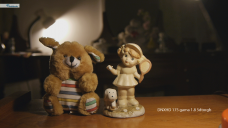
 00015 drift.png1920 x 1080 - 2M
00015 drift.png1920 x 1080 - 2M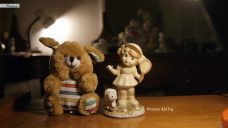
 00015 prores 422.png1920 x 1080 - 2M
00015 prores 422.png1920 x 1080 - 2M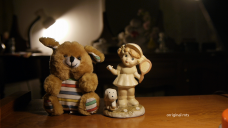
 orriginal driftwood mts.png1920 x 1080 - 3M
orriginal driftwood mts.png1920 x 1080 - 3M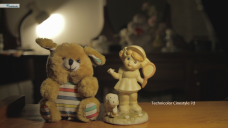
 cinestyleMVI_6638.png1920 x 1080 - 2M
cinestyleMVI_6638.png1920 x 1080 - 2M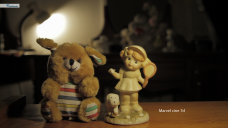
 marvel cine MVI_6646.png1920 x 1080 - 2M
marvel cine MVI_6646.png1920 x 1080 - 2M -
@ danyyel - Thanks for your tests. Loved reading them.
My point with that sample was that he was at ISO 2,000 and the dark areas of her hair, though still grainy, had detail that I doubt a 7D could render. Dynamic range "is" affected by ISO and I clearly remember my 7D turning to mush as I would hit 800 and beyond. Thats why DSLR users crush the shadows - these are not RedRaw or Arri Alexa cameras. Dynamic range and color is limited on all of them.
Also don't be fooled by the "bright room." While it has light, it was ISO 2000, he added optical flare, and he pulled the shadows to high key the video.
Now why the girl is on some strange planet (watch his other Canon 5D video - this artist has a lot of talent) is a mystery.
Anyway even if the 7D for some magical reason did have more dynamic range in low light it still can't:
- Handle motion as well as GH2 GOP1 hacks
- Resolve more detail
- Deal with moire
- Deal with aliasing
- Use 5 billion different lenses
- Plus GH2 costs half as much etc etc.
Ever shoot a close up of a models hair or clothing with a tight pattern with the 7D? No fun.
Anyway, everyone probably already knows all this stuff. Rambling...
Have fun everyone!
-
+1 nomad.
-
The video above does not show anything in terms of DR. In not one scene you see a very contrasted lighting like an open window and the room inside. I am not saying that it is not nice but not good to test DR. As I shown in my test above, I do think that the gh2 is at least as good if not better than the Canon because of the shadow recovery with the high bitrate hack.
-
On video coalition you have a set of test from back-lit chart from the 5d, red and Alexa. They did achieve more than 10 stops and depending on your appreciation of noise a 11 stop. Now that does not say the reality of true actual DR of the dslr. But this test have the merit of using the same methodology/system, so it also the same for the red and the Alexa. At least the result will be the same for all these camera between measured and perceived usable DR.
It is true that it is a little strange the result compared to the jpeg photo processing and the RAW DR of these cameras. One thing that could increase DR would be down-sampling. But the Canon supposedly do line skip so I don't have a clue.
-
I dare to challenge the usefulness of the circular sample they had for the zacuto test
I thought that test to be absolutely useless for real life, usable dynamic range. Which I believe they had mentioned in the video - still they concluded DR from that, leading to those crazy DR numbers for canon DSLR video floating around the web.
-
The problem with all these tests is that clipping is a very clear limit, no discussion about it. But the lower limit is debatable, since the image is increasingly getting drowned in noise, there is no obvious limit. The point where you are still ready to accept an image as such is subjective. Plus, the compression has a lot of influence on the perception of this. The only possibility is screening in blind tests to an experienced audience and have them rate the limit. Plus, you need a very good sample for this. I dare to challenge the usefulness of the circular sample they had for the zacuto test, I consider the Xyla-21 by DSC Labs superior (which we used). Our test is published in the current issue of Digital Production (Munich). DSLRs didn't play the major role, though, it was mainly about Alexa, Red and F3.
-
Pretty much accurate. The mushy image gives the appearance of something that is not there. The only Canon with anything to seriously offer is a 5D, and that's because of the ginormous sensor.
-
from zacuto test : http://www.zacuto.com/the-great-camera-shootout-2011/episode-one
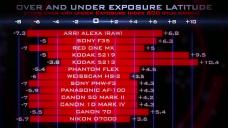
 vlcsnap-2012-01-20-07h56m08s68.jpg1920 x 1080 - 76K
vlcsnap-2012-01-20-07h56m08s68.jpg1920 x 1080 - 76K -
That's correct, I measured Canon 5D in video mode at 9 max. in a scientific test.
-
Stip - good point. I think Canon and their reps and fans are ridding the still image stats a bit heavy hoping nobody will notice. I made some good money with the 7D but times have changed. Loyalty to a brand for "brands sake" makes little sense these days.
I have no fear walking onto small production sets armed with a fleet of 4 hacked GH2's, Leica, Voigtlander, and Zeiss lenses and Arri Locaster lights.
The question is no longer Canon 7D vs Panasonic GH2 - The question is what will Panasonic bring to the table with the GH3!
-
There's no way 7D or 5DmkII can be rated at 11 stops. 5D has a max of 11.5 stops - in stills mode! Only at ISO 100! How can anyone seriously measure it's or 7D's or GH2's video mode at 10-11 stops when those are the numbers they top out for stills? This is totally unscientific but I'd rate any video DSLR between 7 and 9 usuable stops in video mode.
-
Watched that a few times earlier. I like the noise in this. At a glance I'm subconciously thinking I'm watching actual film.
-
As far as "useable" dynamic range goes - GH2 now tops all Canon DSLRs buy a huge margin imo (not a flame - just my opinion). I had the 7D and 5DMK2 and while people "claim" 10-11 stops - it is all mush and waxy pixels. The results are even worse when shooting at higher ISO's where things turn to soup. And don't get me started on moire and aliasing. uhhhg
I can't prove charts and graphs to everyone here because I sold my Canon cameras - plus there is no point because the GH2 evolves every month.
I can make my point with a video however. Download - don't stream - this guys clip shot at ISO 800 - 2000. The tones are VERY well preserved. Noise is everywhere but he didn't clean the file with his editor - it is a raw file and he was just shooting a test. Look at the extreme highlights and shadows. Remember this is after compression / export. His origial files are many gigs in size.
He has talent and will be freaky when he gets used to his GH2's.
The limitations of the GH2 are its 4:2:0 color space. Beyond that it handles motion, detail, usable dynamic range, and high iso far beyond what most videographers are capable of appreciating. I am not going to bash Canon DSLRs....but...
:)
Happy new year to everyone!
-
Zacuto's "Revenge" section (already shot?) as a follow up to their 2011 Shootout, a GH2 was said to be part of the mix of cams they wanted to be included. If GH2 shot with PTool installed and a good patch, interesting!
-
I think we have to separate concepts here :
DR is the way shadows and highlights are clipped: thats all.The tests done in zacuto test #1 show that.
Noise/compression etc, comes in second telling the usable range plus IQ and there we have to take in account some subjective feelings.
May be OP should change the title of post... -
:-) dreams...
-
Well, let's add one thing: 10 bits (or even 12) in recording, or you won't profit much from 12-13 stops.
-
@nomad
i agree: high DR, high IQ :-)
About noise : did you see the chart :
http://www.zacuto.com/the-great-camera-shootout-2011/episode-one
See in video the chart at 21mn-28 s
That means DSLR are at least on par with high end gear concerning DR on the left...
It is a pitty since gh2 didnt do the test for shadows. But we all know that the war against noise in still photography is a huge fight. So DSLR sensors are sort of winners concerning noise (see d7000 sensor). Gh2, especially with average definition 16M sensor and a good binning for video is not so bad.
I have seen a lot of video comparisons gh2 vs 7D, gh2 vs nex5n, nex7, 5D, 60D etc.
Always I preferred gh2 footage. I am not a pro, it is subjective. Always I have seen crispy footage on gh2. Sort of 3D effect :-) Due to compression quality as you said :-)
DR on the left (shadows) as you say is about noise and quality of compression for details. I think here next generation of sensors will give us some surprises. Even with small photosites ...
DR in the right is just about A/D processor technology : just looking for more bits because highlights have so much informations.
Give gh2, hmmm a 14bits processor for A/D conversion, give gh2 a better sensor of new generation, and you will have some gear with DR of 12-13 stops with high IQ (if highest bitrate) : just a good 2k cinema device. -
Right – kind of, but what everybody is aiming for is high DR with high IQ, or it's useless…
Plus, it's all about noise, since clipping can't be helped much. Saturation of the sensor cells is like a brick wall you're running into. Even an Alexa or a RED is saturating with hard clipping at the upper end of exposure. But reducing noise is increasing DR, since you can pull-up the shadows. Everybody is fighting for quality at the physical limits of todays sensor technology. One example: the Alexa is better in low-light, but has less resolution than the EPIC. Reason is very simple: the EPIC has more photocells on the same area (S35), so the single cell is receiving less energy.
Compression comes into play too, since it's lumping noise information together into larger areas (and over time with GOPs), making it more obvious (and harder to cure in post). So, within the limits of 8 bit (which introduces it's own kind of noise, called quantization error) Vitaliy's hack is increasing DR of the GH2. -
@danyyyel
in a flat 8 bit image (i.e. w/ gamma) DR is 8 max :
http://www.cambridgeincolour.com/tutorials/dynamic-range.htm
gamma function allows the image to raise DR to 18 stops !! Because when you double luminance you don't double RGB coordinate values :-)
My conclusion from zacuto tests and from what you are saying is that DSLR and we can say gh2 have a DR beginning in the shadows as almost the same level as top cameras (alexa, etc.) but with clipped highlight (DR =10 compared to DRs >12). The test in zacuto part 1 is done with average exposure etc.
http://www.zacuto.com/the-great-camera-shootout-2011/episode-one
See in video the chart at 21mn-28 s
So if you shoot high DR image (dark parts AND lighted parts together) you will have "problems" in hight lights with gh2 because it will be clipped.
What I want to say is that you can have a low DR camera AND good details in shadows. It depend of lot of factors, the way of binning, etc. While acquisition, you can have hardware : 14 bits processor or 10, 12 bits processor and various software dealing with it.
High (quantity)DR doesn't mean high IQ (Quality):-)
-
@danyyyel - this echoes my experience as well with 5DtoRGB
-
From my test, the 1.8 gama was more just like raising the black level, than truly extending the DR, a bit what the Technicolor Cinestyle does to the Canon. It is more about perception than reality. But the reality is that there is a ton of detail in the shadows but at first sight we don't see it.
-
@cbrandin
I get that :-) -
I think gamma correction affects DR of an 8 bits signal increasing it.
I made a test with my gh2, took 2 photos :
1/ speed 1/50
2/ speed 1/100
then in LR I did comparison of RGB levels on one spot in each photo.
The ratio was 0.86 that is because of gamma correction so you can increase DR in image because of gamma.
What about 1.8 or 2.2 gamma correction? Wich is better for DR? -
It's not really practical to print out a DR chart. The problem is that the dynamic range printers can produce is too limited. Printers can produce a maximum density of around 2.4 - which most cameras can easily reproduce. Also, most printers produce grays by dithering - which means the grays aren't really gray. People who do DR tests procure special film plates and back-light them. Gradations and grays are surprisingly difficult to produce on charts - which is why the good ones are so expensive.
Howdy, Stranger!
It looks like you're new here. If you want to get involved, click one of these buttons!
Categories
- Topics List23,998
- Blog5,725
- General and News1,360
- Hacks and Patches1,153
- ↳ Top Settings33
- ↳ Beginners256
- ↳ Archives402
- ↳ Hacks News and Development56
- Cameras2,367
- ↳ Panasonic995
- ↳ Canon118
- ↳ Sony156
- ↳ Nikon96
- ↳ Pentax and Samsung70
- ↳ Olympus and Fujifilm101
- ↳ Compacts and Camcorders300
- ↳ Smartphones for video97
- ↳ Pro Video Cameras191
- ↳ BlackMagic and other raw cameras116
- Skill1,960
- ↳ Business and distribution66
- ↳ Preparation, scripts and legal38
- ↳ Art149
- ↳ Import, Convert, Exporting291
- ↳ Editors191
- ↳ Effects and stunts115
- ↳ Color grading197
- ↳ Sound and Music280
- ↳ Lighting96
- ↳ Software and storage tips266
- Gear5,420
- ↳ Filters, Adapters, Matte boxes344
- ↳ Lenses1,582
- ↳ Follow focus and gears93
- ↳ Sound499
- ↳ Lighting gear314
- ↳ Camera movement230
- ↳ Gimbals and copters302
- ↳ Rigs and related stuff273
- ↳ Power solutions83
- ↳ Monitors and viewfinders340
- ↳ Tripods and fluid heads139
- ↳ Storage286
- ↳ Computers and studio gear560
- ↳ VR and 3D248
- Showcase1,859
- Marketplace2,834
- Offtopic1,320






